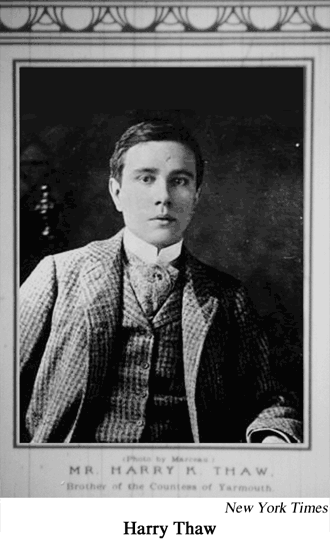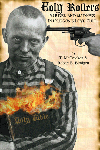Early Cases of Pleading Not Guilty
By Reason of Insanity
 Pleading not guilty by reason of
insanity was a novel defense in 1906, yet there were two
prominent defendants in the United States at the time who
made such pleas: the young man who killed Edmund
Creffield in Seattle and Harry Thaw who killed Stanford
White in New York on the day the Creffield murder trial
began.
Pleading not guilty by reason of
insanity was a novel defense in 1906, yet there were two
prominent defendants in the United States at the time who
made such pleas: the young man who killed Edmund
Creffield in Seattle and Harry Thaw who killed Stanford
White in New York on the day the Creffield murder trial
began.
- Because of the similarities between
the murders and the motives, the Thaw/White case in New
York also had an effect on the Creffield murder
trial.
- Both cases made headlines across the
nation but Thaw and White's story stayed in the news
longer. That's because Harry Thaw was the son of a
Pittsburgh railroad and coke magnate and his victim,
Stanford White, was at the time America's most
distinguished architect. It was sort of the the O. J.
Simpson trial of the day.
- This may also be a partial explanation for why little before has been written about Creffield's murder. Even though Creffield's story has many of the the same elements as White's and Thaw's--sex, insanity, murder, and sensational court trials--Creffield's story was overshadowed and eventually forgotten.
- Since the Thaw/White case had an effect on Creffield's case, it was written about in Chapter Twenty-One of the book, Holy Roller's: Murder and Madness in Oregon's Love Cult.
-
